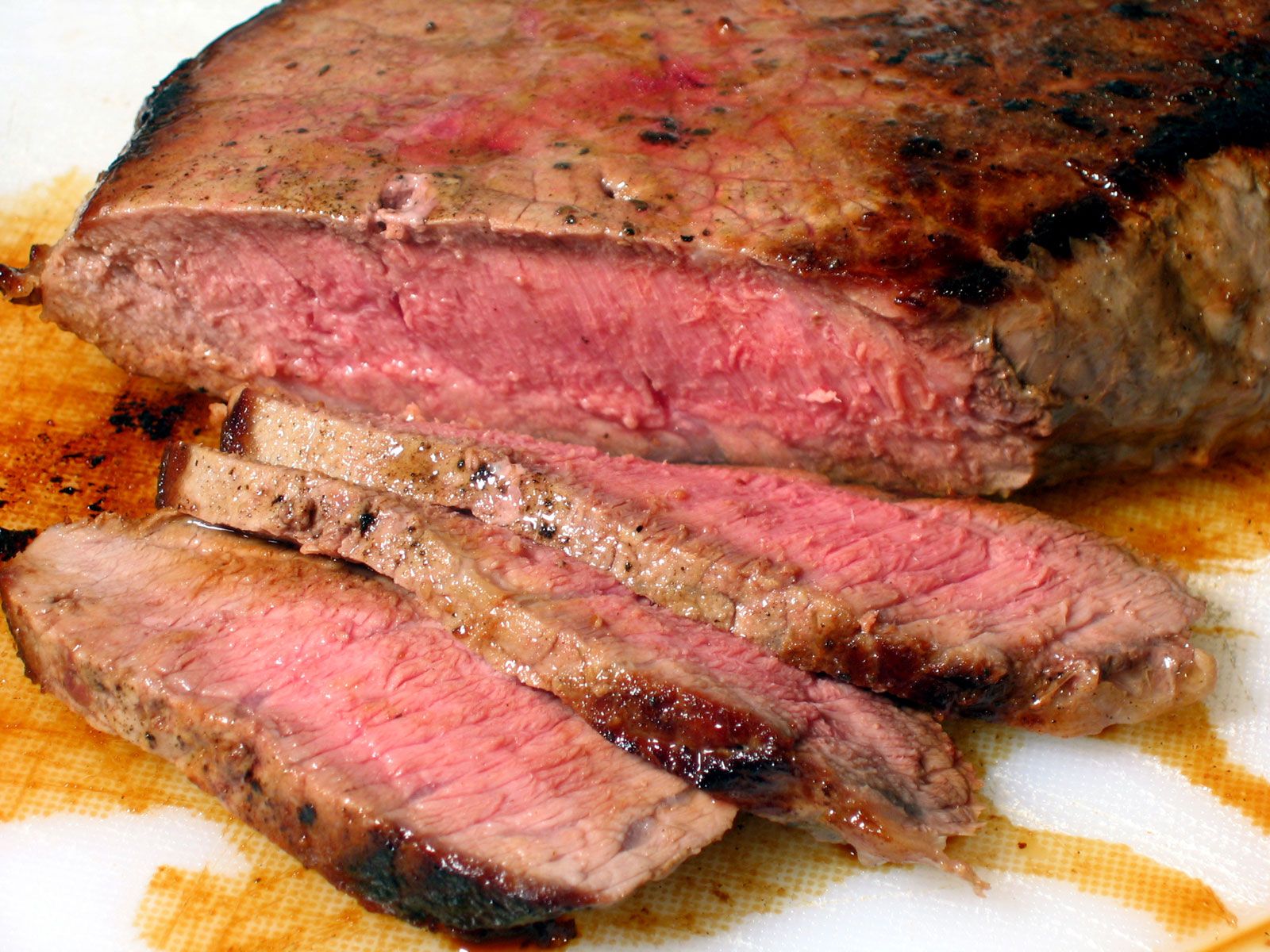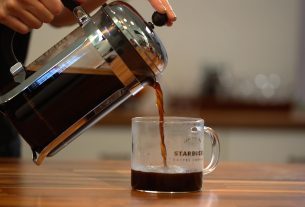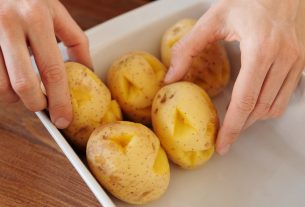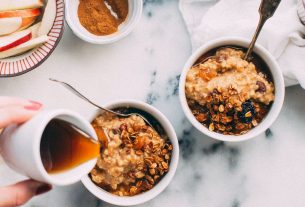Whether you’re a culinary enthusiast or simply looking to elevate your cooking game, the age-old debate of “bake vs broil” is sure to intrigue and captivate you.
In this culinary clash of the titans, we delve into the realm of broiling – a scorching technique that promises to transform your dining experience.
Brace yourself for the sizzling secrets and lip-smacking outcomes that lie ahead!
bake vs broil
Baking and broiling are two different cooking methods that serve distinct purposes.
Baking is a slower cooking method that uses lower temperatures to evenly cook food throughout.
It is ideal for dishes that require more time to become tender or need to retain moisture.
Broiling, on the other hand, is a high-heat cooking method that quickly sears the outside of food, creating a crispy and browned exterior while leaving the interior rare or medium-rare.
It is best suited for solid foods that have a relatively short cooking time, such as thin cuts of meat or vegetables.
However, broiling can easily dry out food, so caution must be exercised to prevent burning.
Monitoring the cooking time closely and placing the food on the top rack of the oven, uncovered, ensures maximum direct heat exposure during broiling.
Key Points:
- Baking uses lower temperatures and slow cooking for even cooking throughout
- Suitable for dishes needing tenderness or moisture retention
- Broiling uses high-heat cooking to sear the outside and leave the inside rare or medium-rare
- Best for solid foods with a short cooking time
- Can easily dry out food, caution needed to prevent burning
- Monitor cooking time closely and place food on top rack, uncovered for maximum direct heat exposure during broiling
bake vs broil – Watch Video
💡
Pro Tips:
1. Bake vs broil trivia: Did you know that baking and broiling are technically the same process, but with different heat sources? Baking uses indirect heat, usually from the bottom, while broiling uses direct heat from the top.
2. In ancient times, people used to “bake” their food by burying it in hot sand or ash, and then allowing it to cook slowly over time. This early method of baking was a precursor to what we now know as modern-day baking.
3. Broiling is a quicker cooking method compared to baking, as it uses high heat directly on the food’s surface, resulting in a delicious browned or charred effect. This process is especially popular for cooking meat or vegetables with a crispy exterior and a juicy interior.
4. While bake and broil are two primary cooking methods, there is also a third technique known as “grilling.” Grilling involves cooking food on a griddle or grill with heat coming from below, giving the food a distinct smoky flavor.
5. The term “broil” originated from the Middle English word “broilen,” meaning to cook by direct heat. This method was commonly used in medieval times to prepare dishes over an open fire, which later evolved into using enclosed broilers or ovens for better temperature control.
1. Introduction To Bake Vs Broil Cooking Methods
When it comes to cooking, there are numerous methods and techniques to choose from. One of the fundamental decisions that every home cook must make is whether to bake or broil their food. While both methods involve using an oven, they differ in terms of heat intensity, cooking time, and the outcomes they produce.
Baking typically involves cooking food by surrounding it with a consistent, dry heat. This method is often used for dishes that require slow and even cooking, such as cakes, casseroles, or bread.
On the other hand, broiling involves exposing food directly to high heat from the oven’s top heating element. This approach is ideal for foods with a solid structure that needs to be cooked quickly at high temperatures.
In this article, we will delve into the advantages of broiling and uncover the secrets behind achieving perfectly cooked meals with a crispy and browned exterior. Read on to discover the best cuts of meat and vegetables for broiling, how to prevent food from drying out or burning, and the importance of monitoring cooking time for delicious broiled dishes.
2. Advantages Of Broiling For Foods With Solid Structures
Broiling is a popular cooking method for foods with a solid structure because of its ability to quickly cook food at high temperatures. It is particularly suitable for thinner cuts of meat or vegetables that can cook through rapidly. Broiling allows for efficient heat transfer, helping to retain the food’s moisture and natural flavors while achieving a desirable texture.
During broiling, the higher temperatures quickly sear the outside of the food, creating a crispy and browned exterior. This caramelization process adds depth and complexity to the flavors, making broiled dishes visually appealing and delicious. If you’re looking to serve a steak with a wonderfully charred crust, broiling is the way to go.
3. Achieving A Crispy And Browned Exterior Through Broiling
One of the main advantages of broiling is the ability to achieve a crispy and browned exterior on food. The intense heat from the broil setting quickly browns and caramelizes the surface, creating a visually appealing and tantalizing crust. This is especially desirable for dishes like chicken wings, fish fillets, or even roasted vegetables.
The secret to achieving a crispy and browned exterior lies in managing the cooking time and heat intensity. As broiling can quickly dry out food, it is essential to monitor the process closely. Keep a close eye on the color and texture of the food to prevent burning. Adjusting the distance between the food and the heating element can also help modify the heat intensity and control the browning process.
Remember, finding the right balance is crucial. A longer cooking time may risk drying out the food, while a shorter time may leave you with an undercooked interior. With practice, you’ll become adept at achieving the perfect level of crispiness and browning in your broiled dishes.
- Manage cooking time and heat intensity
- Monitor color and texture to prevent burning
- Adjust distance between food and heating element
- Find the right balance for perfect crispiness and browning.
4. Ideal Cuts Of Meat Or Vegetables For Broiling
Not all cuts of meat or types of vegetables are created equal when it comes to broiling. Certain cuts and varieties work better with this cooking method, resulting in tender, flavorful, and evenly cooked dishes.
For meats, thinner cuts such as flank steak, pork chops, or chicken breasts are ideal for broiling. Thicker cuts may require longer cooking times and can be challenging to cook evenly. If you prefer thicker cuts, consider adjusting the broiling distance or using a lower heat setting to avoid burning the exterior while waiting for the interior to cook.
When it comes to vegetables, those with a solid structure that can withstand high temperatures are best suited for broiling. Bell peppers, zucchini, asparagus, or even Brussels sprouts are excellent choices. The intense heat of broiling brings out the flavors and adds a delightful char, enhancing the overall taste and texture.
5. Avoiding Food Dehydration And Burning During Broiling
One of the challenges of broiling is the risk of food dehydration and burning. The high temperatures and rapid cooking process can quickly dry out the food if not managed properly. To avoid this, there are several precautions you can take.
First and foremost, monitor the cooking time closely. Broiling is a fast cooking method, and a few extra seconds can mean the difference between perfectly cooked and burnt food. Keep a timer handy and check on the progress frequently.
Furthermore, ensuring that the food is properly marinated or coated with oil can help prevent excessive drying. Oil acts as a barrier, locking in moisture and protecting the surface of the food. You can also baste the food with marinade or sauce during broiling to add extra moisture and flavor.
Finally, consider using a thicker cut of meat or vegetable if you find that your food dries out too quickly. Thicker cuts will take a bit longer to cook, allowing you more control over the process and reducing the risk of burning.
- Monitor the cooking time closely
- Properly marinate or coat the food with oil
- Baste the food with marinade or sauce during broiling
- Consider using a thicker cut of meat or vegetable
6. Proper Placement Of Food In The Oven For Broiling
To achieve the best results when broiling, the placement of the food within the oven is critical. Since broiling relies on direct heat exposure, it is essential to position the food on the top rack of the oven.
By placing the food on the top rack, it ensures that it is closest to the heating element, allowing for maximum direct heat exposure. This enables faster cooking and helps create that desired crispy and browned exterior. Additionally, positioning the food on the top rack prevents the food from coming into contact with its own drippings, reducing the risk of flare-ups or burning.
Tip: Remember to follow the manufacturer’s recommendations for broiling in your specific oven model. Each oven may have differences in heat distribution and recommended rack positions, so consult the manual if you’re unsure.
- Place the food on the top rack for maximum direct heat exposure.
- Prevent contact with drippings to reduce the risk of flare-ups or burning.
7. Benefits Of Keeping Food Uncovered During Broiling
Another key aspect to keep in mind when broiling is to leave the food uncovered. Unlike baking, where covering food with aluminum foil can help retain moisture, broiling benefits from maximum direct heat exposure.
Leaving the food uncovered during broiling allows the high heat to directly sear the surface, promoting browning and caramelization. Furthermore, covering the food can trap moisture, preventing the surface from drying out and crisping up.
By keeping the food uncovered, you ensure that the heat is evenly distributed, enabling the food to cook uniformly. The result is a perfectly browned and crispy exterior that adds both visual appeal and a delightful texture to your dishes.
8. Broiling As A Quick And Efficient Cooking Method
Broiling is not only favored for its ability to produce delicious and visually appealing dishes, but also for its quick and efficient nature. Unlike baking, which requires more time for the heat to penetrate the entire dish slowly, broiling quickly sears the surface, allowing for faster cooking times.
This speed makes broiling an excellent option for busy households or for those evenings when you need a satisfying meal on the table in a short amount of time. In a matter of minutes, you can have a beautifully broiled steak, grilled fish, or charred vegetables ready to serve.
By harnessing the intense heat of broiling, you can achieve gourmet-quality results without spending hours in the kitchen. Broiling is both a time-saving and flavor-enhancing technique that can elevate your cooking to the next level.
9. Monitoring Cooking Time For Perfect Broiling Results
Monitoring the cooking time when broiling is crucial for achieving the desired results. The quick and intense cooking process requires your attentiveness to prevent undercooking or burning your food.
Keep a close eye on the color and texture of your food during the broiling process. This will help you determine when it is properly browned and cooked to your liking. Remember that the cooking time can vary depending on the thickness of the food, so it’s important to adapt and adjust accordingly.
If you’re uncertain about the cooking time for a particular dish, it’s always a good idea to refer to a reliable recipe or cooking guide. These resources can provide you with estimates and guidelines to help you achieve the perfect broiled result.
10. Conclusion: Making The Most Of Broiling For Delicious Meals
Broiling: Unlocking the Secrets to Delicious Meals
Broiling is a versatile and efficient cooking method that can produce exquisite and mouthwatering meals. Its high temperatures and direct heat exposure make it an ideal choice for fast cooking solid-structured foods.
During the broiling process, you have the opportunity to achieve a crispy and browned exterior that adds depth and complexity to your dishes. To unleash the full potential of broiling, it is essential to select the right cuts of meat or vegetables, monitor the cooking time, and position the food properly in the oven.
To ensure optimal results, remember to keep your food uncovered while broiling. This allows for maximum heat exposure while preventing the food from drying out. With practice and attention to detail, you can consistently create delectable broiled dishes that will impress both your family and guests.
So, when faced with the decision between baking and broiling, consider the advantages and unique qualities of broiling. Embrace this quick and efficient cooking method, and embark on the journey to achieving perfectly broiled meals that are sure to tantalize your taste buds.
💡
You may need to know these questions about bake vs broil
Should I use bake or broil?
When deciding whether to bake or broil, consider the texture and thickness of the food you are cooking. Baking is a great choice for dishes that require a solidifying effect, such as cakes or casseroles, while broiling is ideal for swiftly cooking thin cuts of meat or achieving a crispy texture on the surface of your dish. Ultimately, understanding the desired outcome of your dish will help you determine whether to use bake or broil for the best results.
Is broil hotter than bake?
Yes, broiling is indeed hotter than baking. While baking involves cooking at cooler temperatures for longer periods of time, broiling utilizes higher temperatures to cook food in a shorter amount of time. Broiling is a great option for quickly searing the surface of foods, creating a delicious crispy texture, while baking is typically used for a more even and gentle cooking process.
Is it better to broil or bake chicken?
When it comes to broiling or baking chicken, the choice depends on what you’re looking for in terms of texture and juiciness. Broiling chicken creates a delectable crispy exterior, adding an extra element of satisfaction to each bite. On the other hand, baking maintains the natural juices of the chicken, ensuring a moist and tender meat. While broiling is a quicker cooking method, baking allows for a longer, slower process that infuses the chicken with rich flavors. Ultimately, the decision between broiling or baking chicken depends on your personal preference and desired outcome.
What is the difference between broil and bake beef?
Broiling and baking beef differ in their cooking methods and desired outcomes. When it comes to broiling, the meat is cooked using high heat, usually around 500 to 550 degrees F. The intense heat from the broiler quickly sears the outside of the beef, creating a flavorful crust while keeping the interior tender. On the other hand, baking beef involves lower heat, typically between 400 to 450 degrees F. Baking allows for a slower, more even cooking process, resulting in a juicy and evenly cooked piece of beef. While broiling requires attentiveness to prevent burning, baking offers the convenience of a “set it and forget it” approach.
Reference source
https://www.maytag.com/blog/kitchen/bake-vs-roast-vs-broil.html
https://www.healthline.com/nutrition/broil-vs-bake
https://www.southernliving.com/food/how-to/broiling-vs-baking
https://www.momswhothink.com/bake-chicken-vs-broil-chicken/



